PHOTO TOUR OF THE MRIDANGAM
Basic Strokes Used in mridangam
ThaAdditional Photographs
Front Side of the Mridangam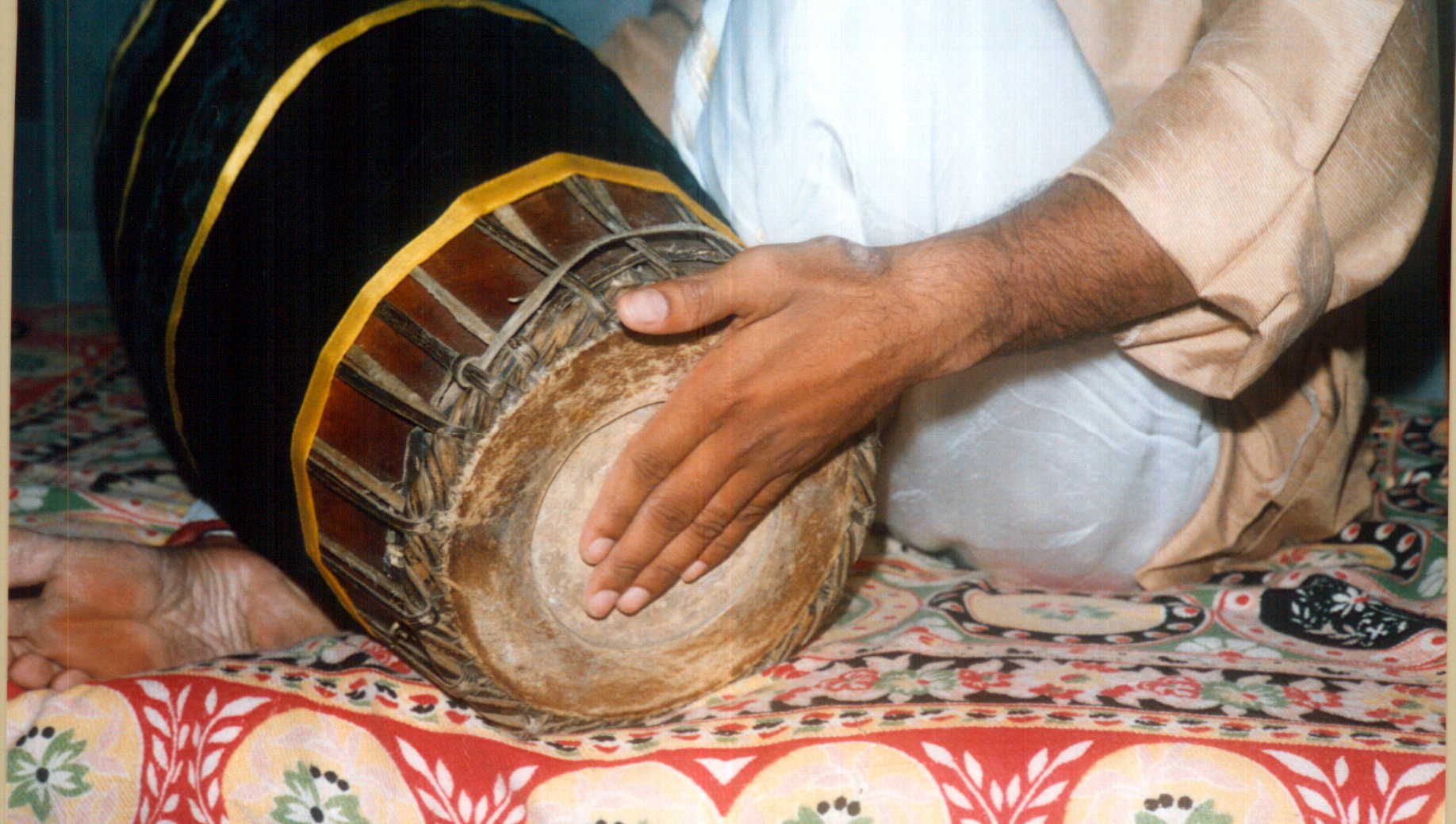
Tha is a non-vibrating tone played on the left hand side of the Mridangam.

Dhi is a non-vibrating tone played on the centre black portion of the right hand side of the Mridangam using middle,ring and small fingers..

Thom is a vibrating tone played on the outer side of the left hand side of the Mridangam.

Nam is a vibrating tone played on the outer layer of the right hand side of the Mridangam. Here there are two styles of playing the tone. The one you are seeing is the style adopted by Palani M.Subramania Pillai and his disciples. The difference is the middle finger is used as support for playing "Nam" instead of ring finger.
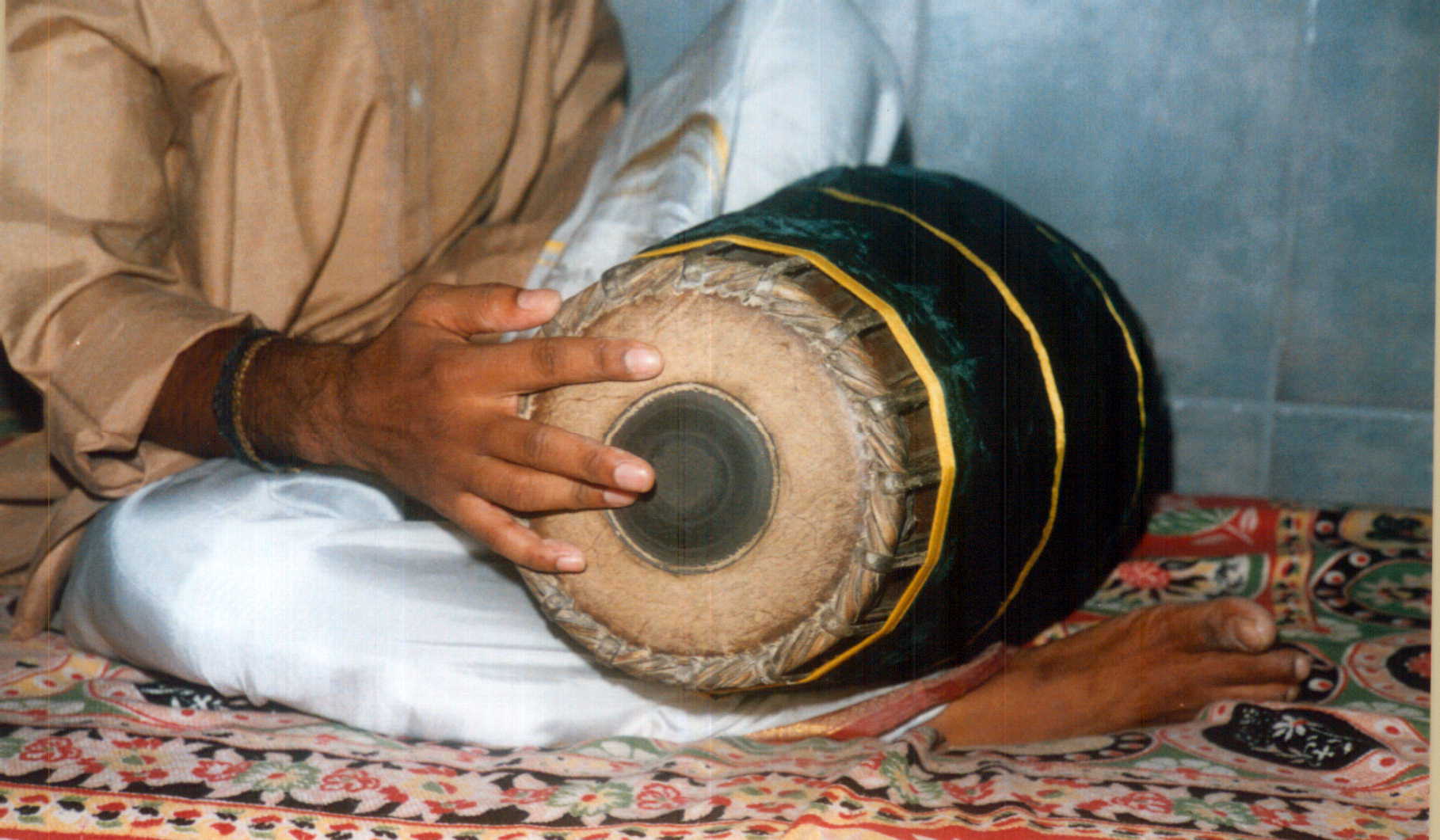
Nam is a vibrating tone played on the outer layer of the right hand side of the Mridangam. Here there are two styles of playing the tone. The one you are seeing is the style adopted by Tanjore School. The ring finger is used as support instead of middle finger used by Palani M.Subramania Pillai and his disciples.

Gumukki is a bass tone produced by playing on the inner layer of the lower end of the left hand side. This bass sound is produced only when there is a special paste of rava or semolina is applied to it. Otherwise we can listen to only the Thom tone.

Full Chapu is a vibrating tone played with the small finger on the right hand side. The exact position of playing this is just in between the black patch and the outer layer. This sound produces the Adhaara Sadjam emanated by the Tampura or in other words this full chapu is tuned to the tonic of the Tambura
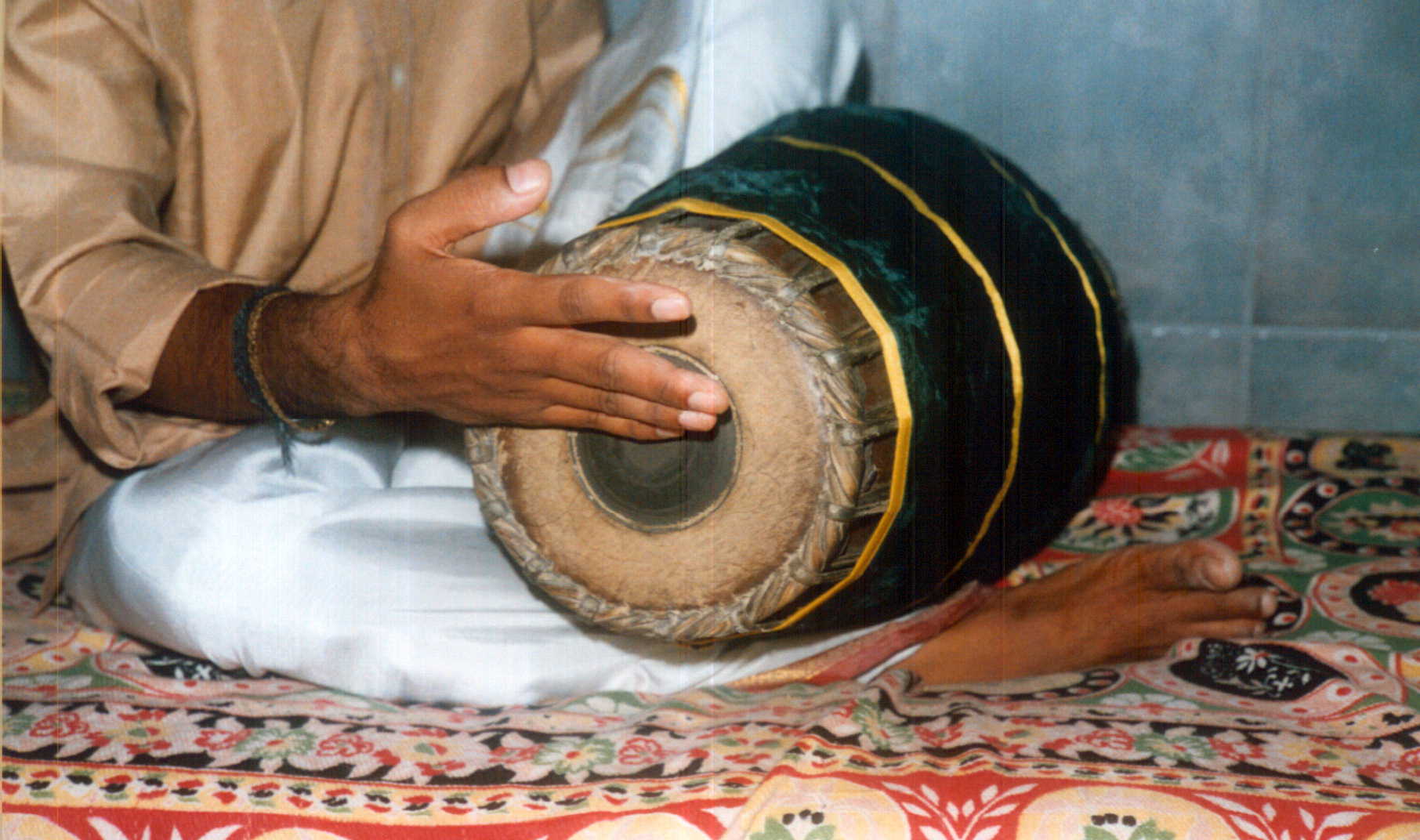
Araichapu is a vibrating tone played on the right hand side of the mridangam by using the small finger with the support of other fingers just at the half of the black patch towards the far end of the right hand side. The Arai Chapu tone produces the Top Sadjam tone of the tambura.
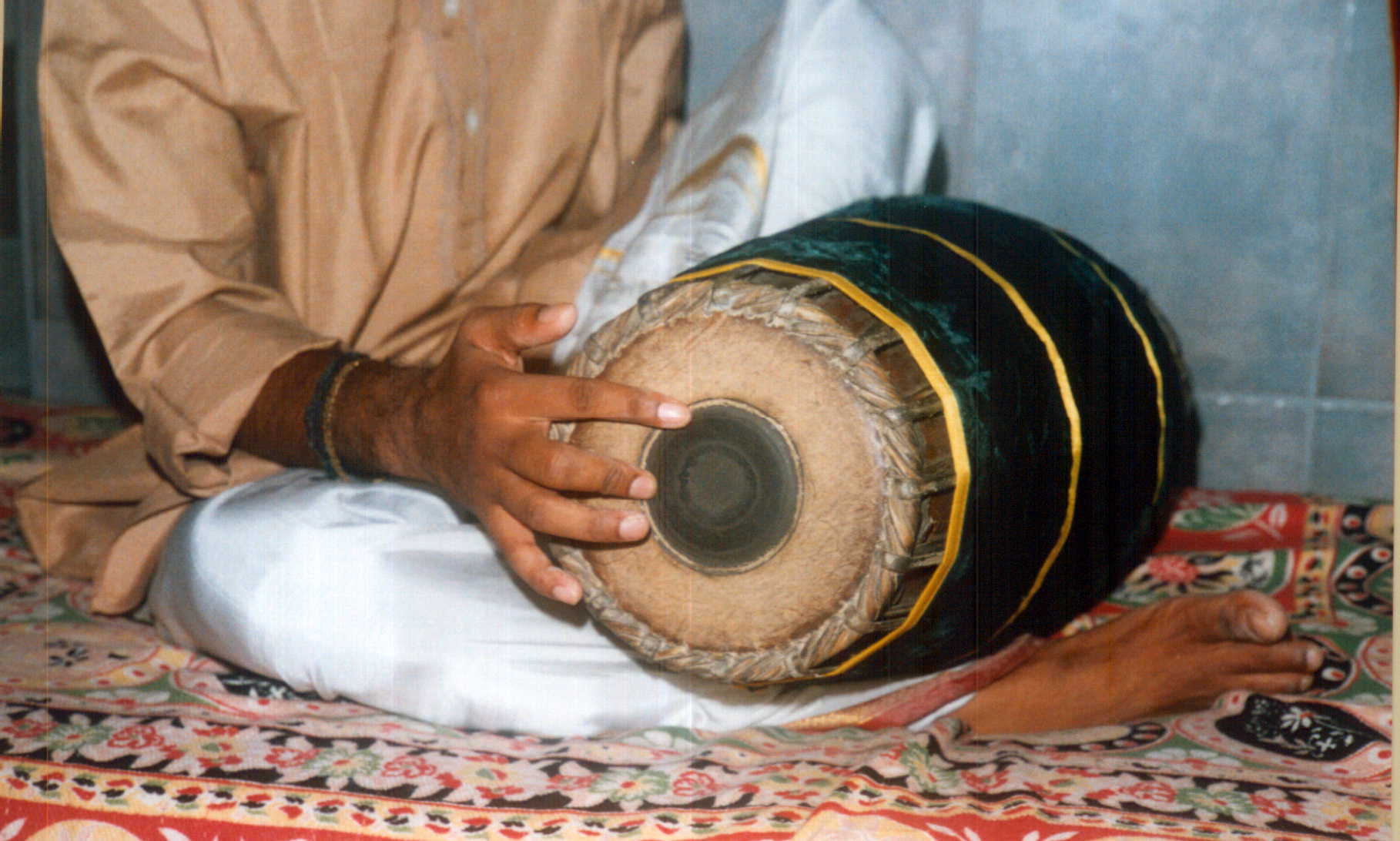
Dhin is a vibrating tone played on the right hand side using the index finger on the point between the black patch and the outer layer. This also produces the tonic of the Tambura and the mridangam is also tuned using this tone. This Dhin you are seeing is popularly played by the Palani style of mridangam playing where the middle finger is fixed for support.
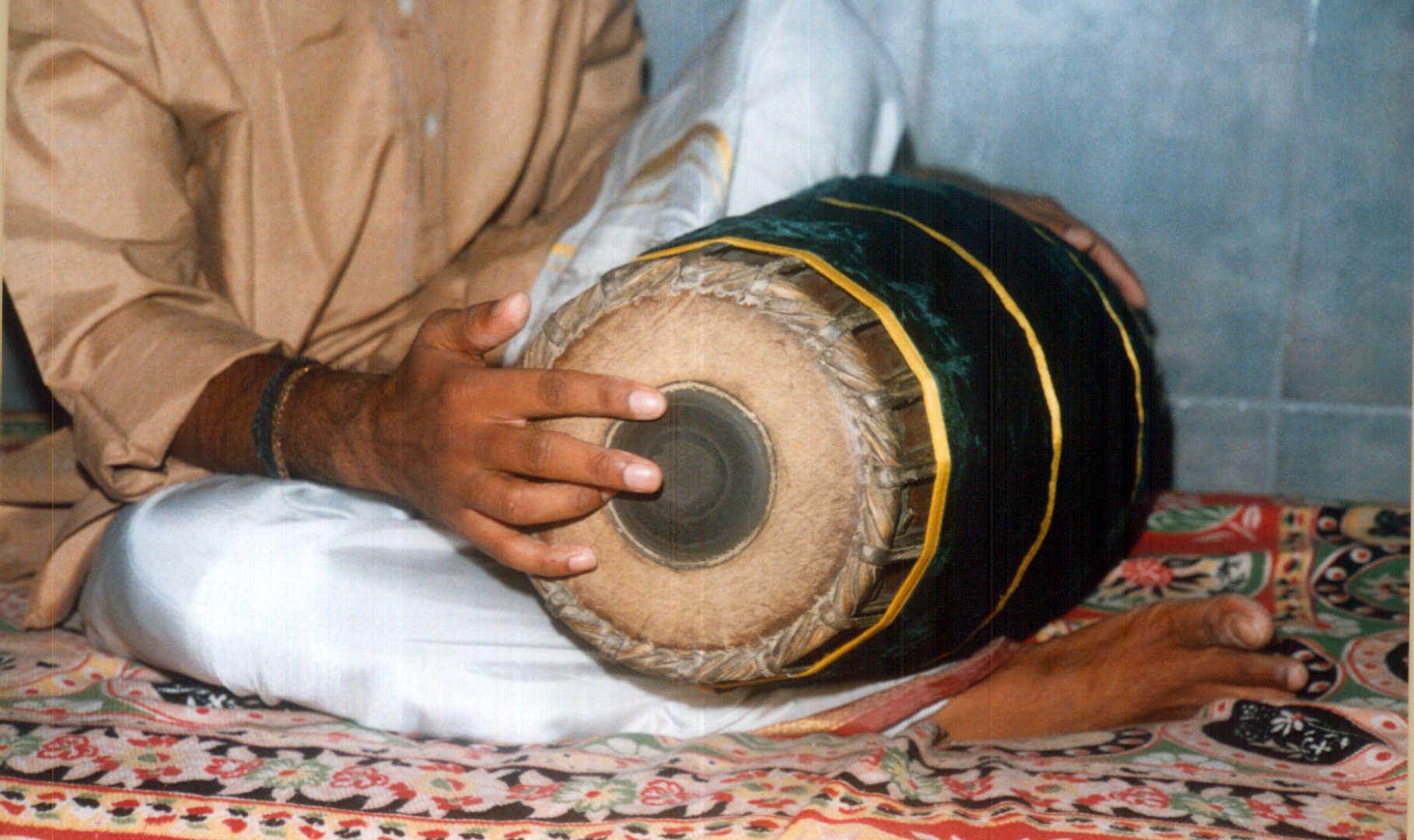
Dhin is a vibrating tone played on the right hand side using the index finger on the point between the black patch and the outer layer. This also produces the tonic of the Tambura and the mridangam is also tuned using this tone. This Dhin you are seeing is popularly played by the Tanjore style of mridangam playing where the ring finger is fixed for support.

Ta is a non-vibrating tone produced by playing with the Index Finger on the exact centre of the Black Patch on the right hand side.

This is the front side of the Mridangam.
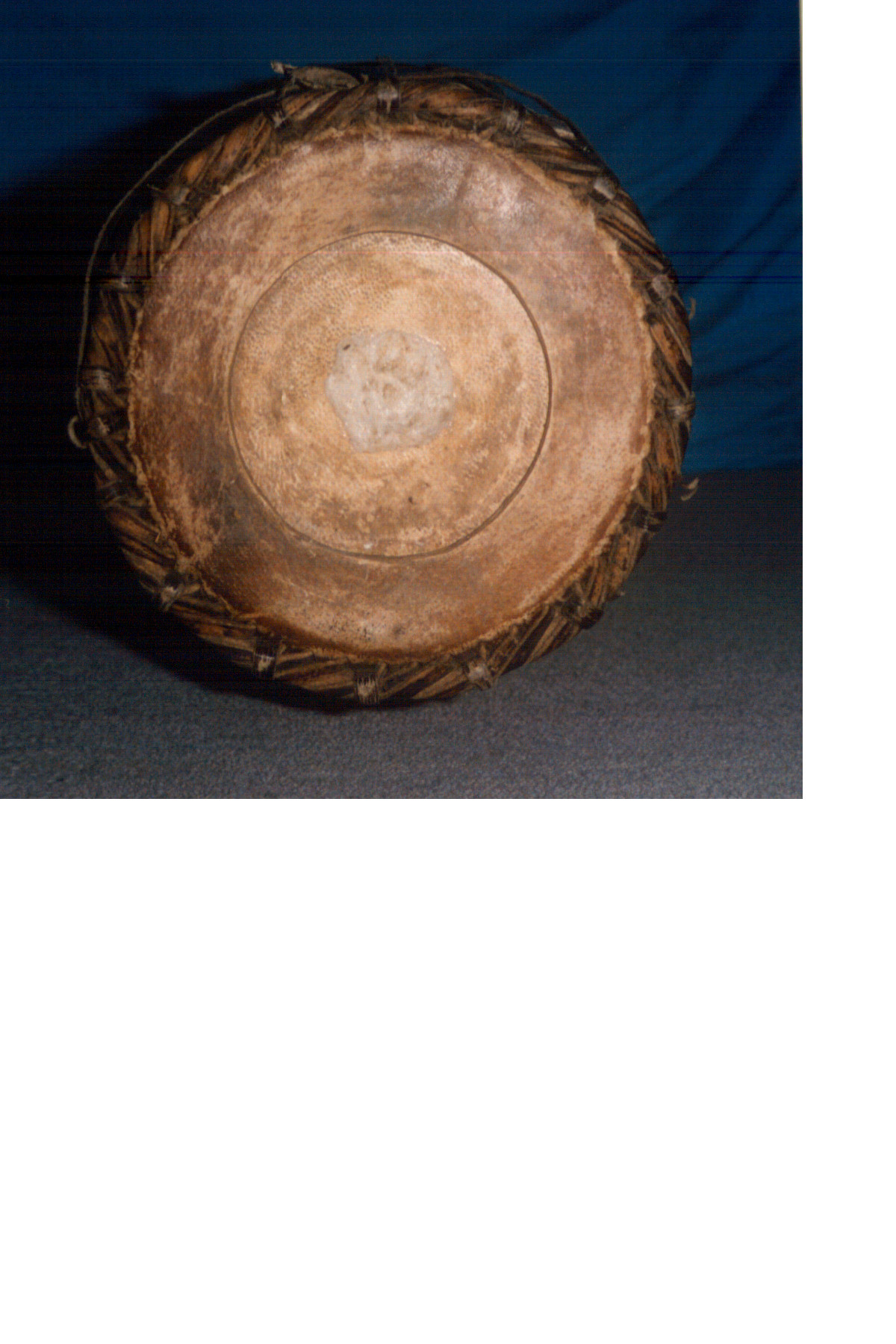
This is the Left side of the Mridangam.
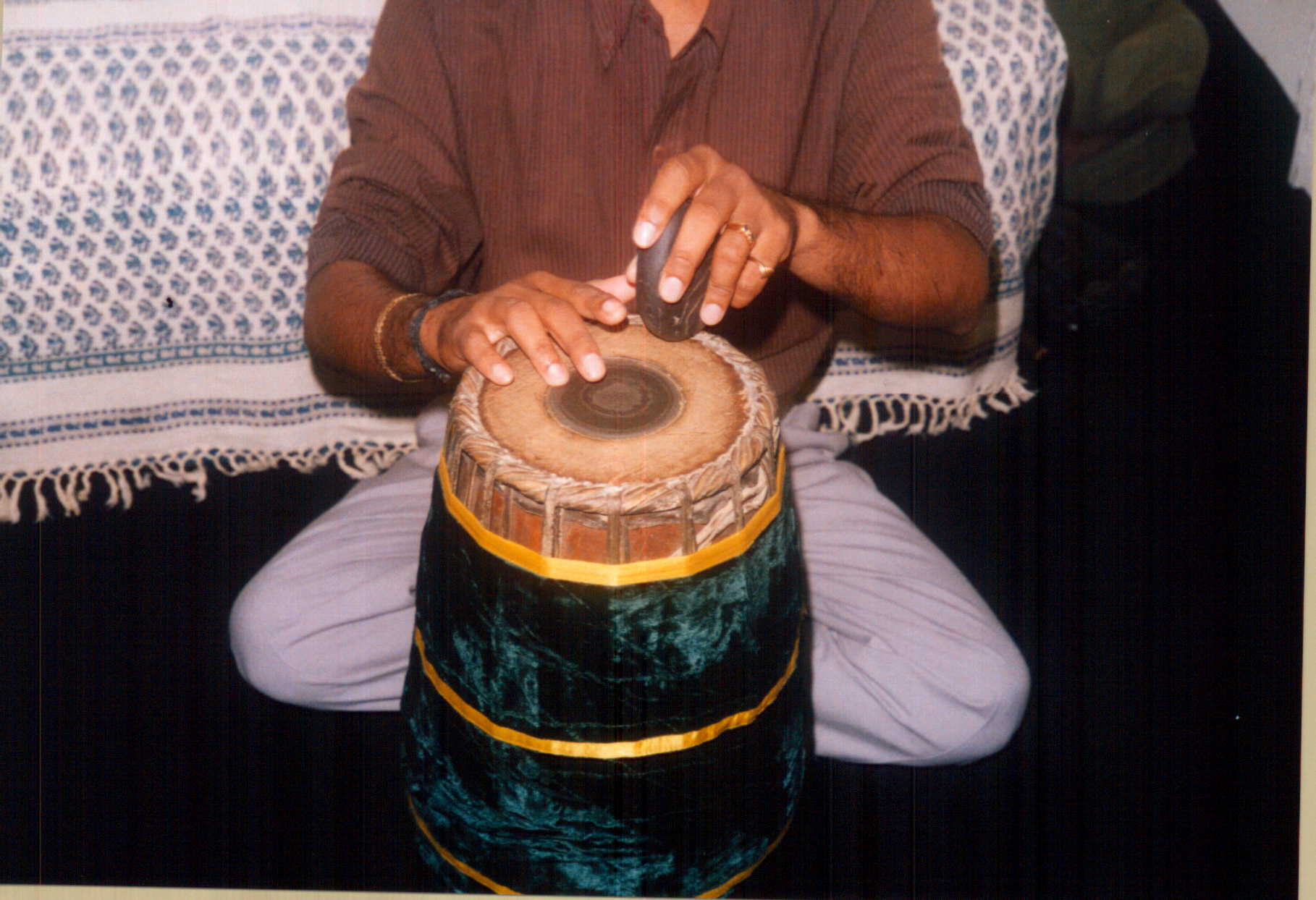
By tapping slightly on the top of the Skin Portion we can increase the pitch to some extent.
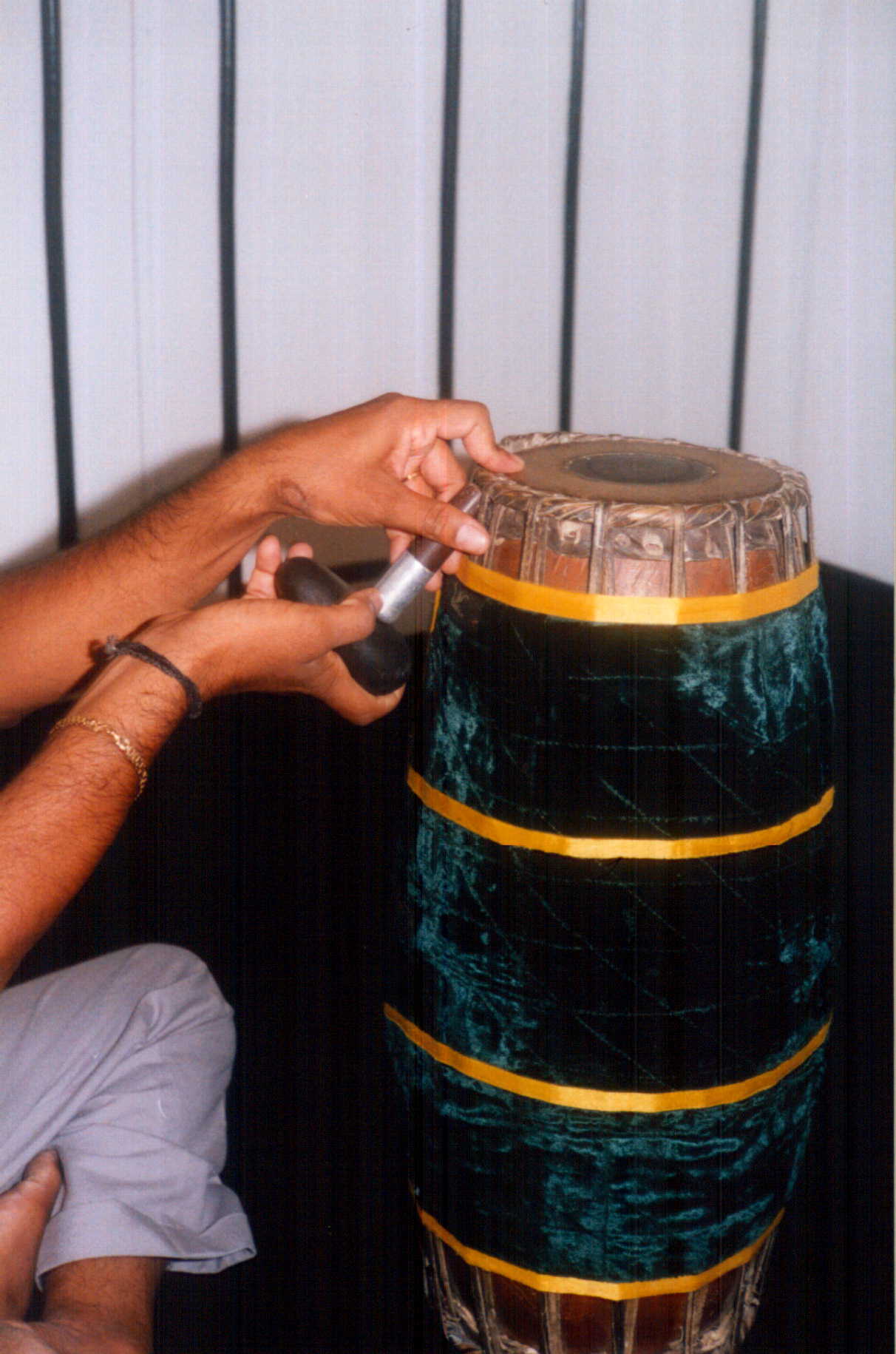
By tapping slightly at the bottom of the Skin Portion we can decrease the pitch to some extent.
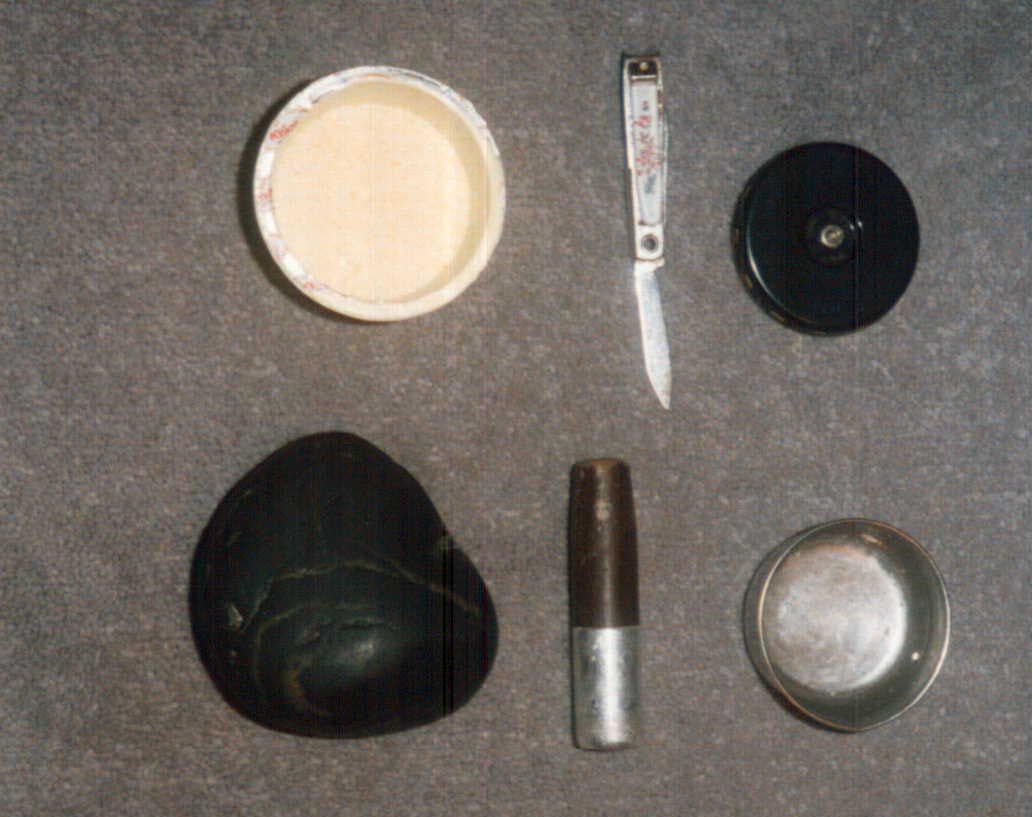
These are the Kits used by Mridangists to adjust the Pitch of the Instrument.The black stone is used to increase the pitch by tapping at the top of the instrument. The small piece of wood in conjunction with the stone is used to reduce the pitch by tapping gently beneath the surface of the top portion. The small knife is used to remove the Rava or Semolina paste from the instrument as soon as the concert is over. The cup is used to keep water for the Rava paste. The water is periodically applied over the rava throughout the concert to keep it wet and keep the skin on the left hand side wet so that the Bass effect is pleasing and enriching. The Chromatic pitch pipe is used basically to set the sruti at home before the concert.

This is the general Posture adopted by many mridangists which gives felicity in performing as well as correct posture helps one to produce the sounds correctly. Moreover this posture helps the mridangist to sit for a longer time without feeling numbness on his legs while the weight of the mridangam is pressing against them. This posture also helps in proper blood supply to the lower part of the body particularly the legs. The scientific posture is that there are three major carved rings on the mridangam. The first ring from the right hand side signifies that the right elbow is parallel to that. The second ring that is the centre ring should be parallel to the centre of the body (for example the shirt button line) and also the right foot is rested on the outer side of the mridangam on this second ring. On third ring we rest the left leg for support. The right foot and the left leg on the third ring holds the mridangam tightly and it helps the mridangam from rolling away.